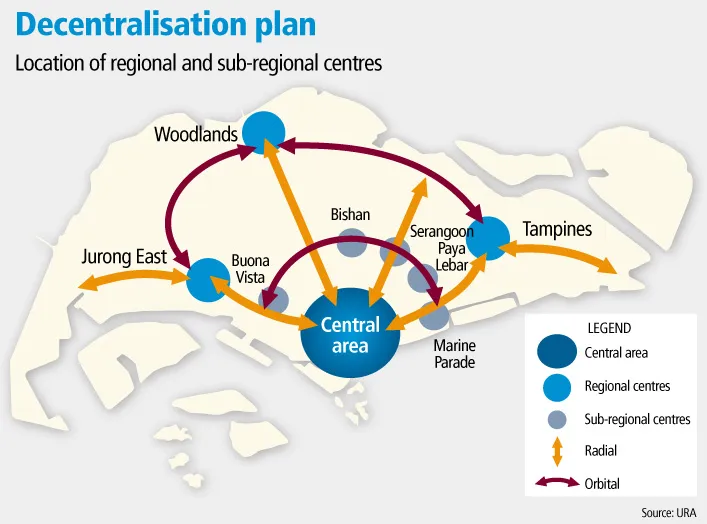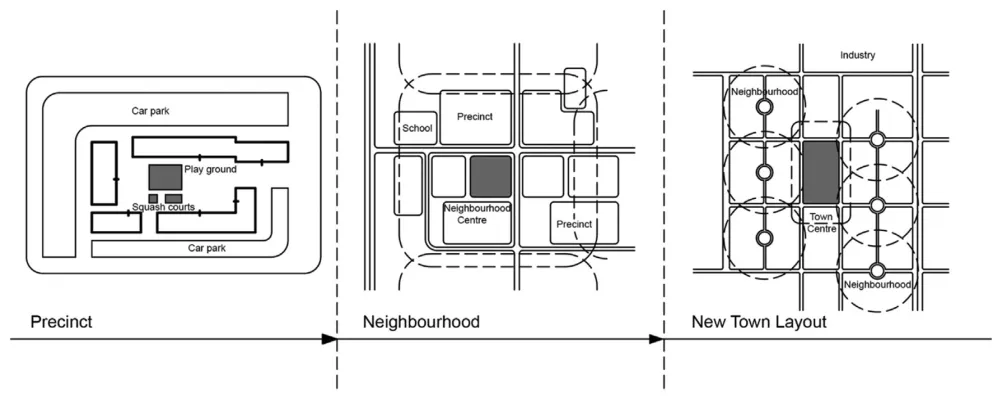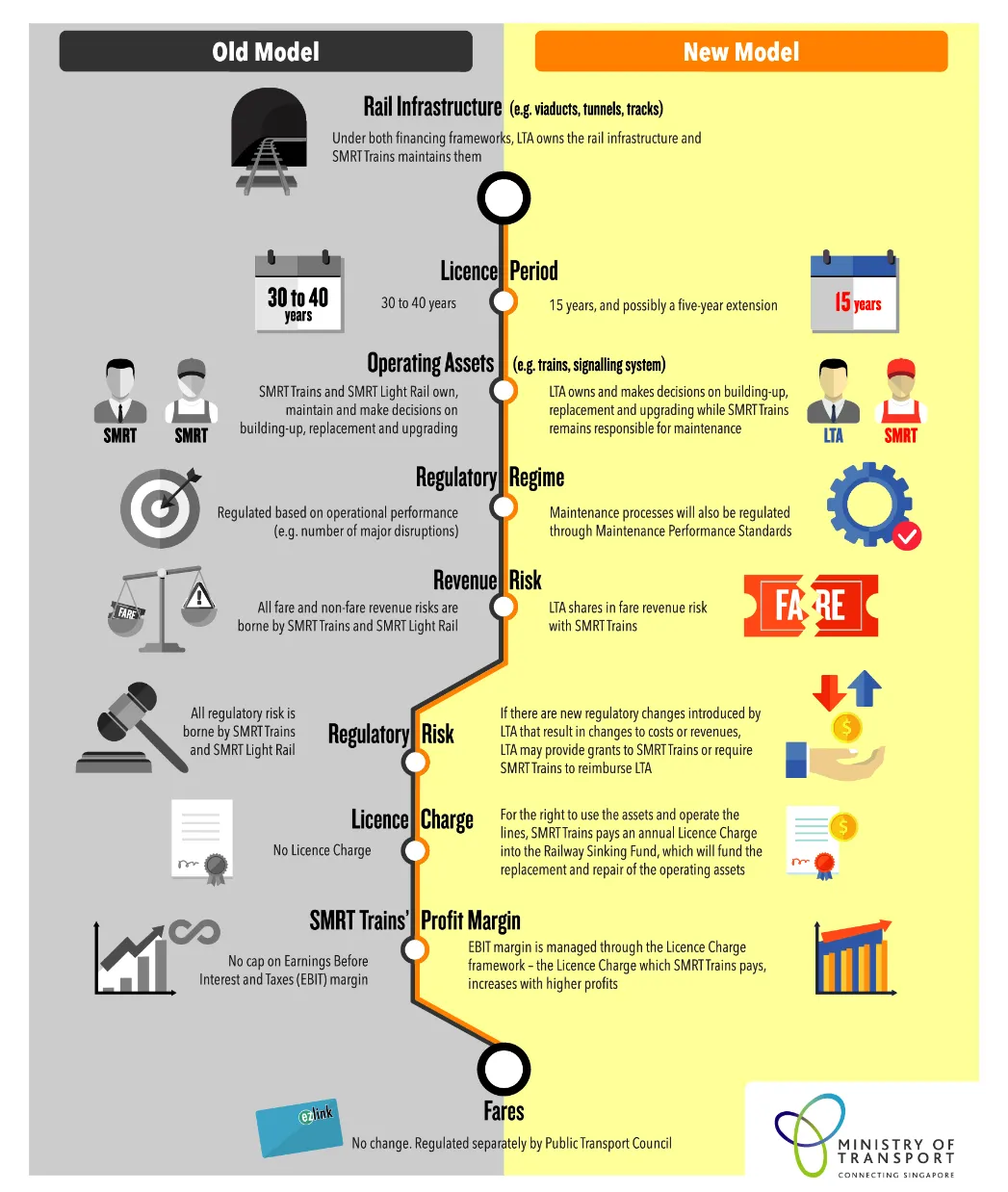Why is Singapore's public transport so good?
This post contains monetary amounts which are currently showing in the currency from the source material. You can convert them all to a single currency by selecting one from this list:
What is good?
I moved from Singapore to London in 2022. I found Singapore’s public transport to be much better than London’s, despite rankings putting the two cities close together.

McKinsey graded public transport on 5 criteria: availability, affordability, efficiency, convenience, and safety. Singapore was 2nd in the world (after Hong Kong), with London at 9th. But the gap between Singapore and London feels a lot bigger than the scoring indicates. Buses are more frequent, service isn’t interrupted by roadworks and strikes, it’s cheaper, cleaner, quieter, faster, and so forth. So I’ll ignore the score and assert instead that Singapore truly is much better for any subcategory in the five criteria above.
While I’ll compare Singapore to London to provide context and illustration, this post is not about London’s transit being bad, but how Singapore’s public transport is so remarkably good.
1. Spending
One possible reason is spending — if Singapore spends more than its contemporaries, then its straightforward to explain that the money is resulting in lower fares, more buses, etc. I compared the relevant financial statements between Singapore and London to check this. Numbers are from the Land Transport Authority (LTA) financial statements for 2022-2023 and Transport for London (Tfl) annual report for 2022-2023 (pages 110, 112, 114, 136).
| Singapore | London | |
|---|---|---|
| Revenues | ||
| Fare revenue for bus & rail | SGD841m | GBP4.3b |
| Non-fare income for bus & rail | SGD113m | GBP1.2b |
| Gross income for bus & rail | SGD954m | GBP5.5b |
| Income not for bus & rail | SGD1b | GBP300m |
| Total gross income | SGD2b | GBP5.8b |
| Expenses | ||
| Gross expenditure for bus & rail | SGD2.3b | GBP6.7b |
| Opex not for bus & rail | SGD2.7b | GBP2.5b |
| Total gross expenditure | SGD5b | GBP9.2b |
| Profit/(loss) | ||
| Profit/(loss) before grants | (SGD2894m) | (GBP3453m) |
| Grants | SGD2923m | GBP3522m |
| Overall profit/(loss) before taxes | SGD29m | GBP69m |
London outearns and outspends Singapore on pretty much every category, including profit per capita, which I wouldn’t have guessed given the disparity in service quality. Even fares are substantially more expensive: Londoner bus riders pay a flat GBP1.75 for a bus ride, whereas Singaporeans pay between SGD1.09 and SGD2.37, based on distance travelled.
I can’t tell how Singapore gets more from less operational spending. Maybe London is inefficient? Weighed down by legacy infrastructure?
At least the capital expenditure numbers — spending on assets like trains, buses, rail tracks, roads, machinery, depots, etc — show a clearer picture.
Sources: SingaporeThe Ministry of Transport spent SGD9.2b in government development expenditure, 40% higher than it expected to spend, due to “catching up of delays after the ease of COVID-19 restrictions as well as expansion and renewal of the domestic rail network”. In the budget, SGD4.5b of the planned SGD6.5b was earmarked for domestic rail projects and SGD2b for road infrastructure and bus projects. If we assume 20-40% of the increase was in rail and bus, then the government actually spent SGD5.5-SGD6.7b on rail and SGD2.4-SGD2.8b on roads. The median sum is SGD8.5b, which I’ve used in the table.
, LondonTable 9.8e, 2022, capital expenditure..
| Singapore | London | |
|---|---|---|
| Development expenditure | SGD8.5b | GBP5.9b |
Singapore spends more than double London per capita and nearly the same in absolute terms. Due to a lack of funding, TfL has had to abandon several infrastructure projects which would have replaced decades-old trains, extended train lines, fixed signalling systems, and otherwise reduced service disruptions. Even the small things don’t receive investment — in most parts of the tube underground, mobile data doesn’t work. Meanwhile, Singapore has had complete coverage since 1996!
2. Integrated, long-term planning
The Singapore government integrates land use planning with transport planning. This works because the government has high state capacity and also owns 90% of the land in the country. This long-term, detailed planning means that the government can design the city to be public transport-friendly many years in advance. Political stability means the government actually executes on these plans.
The country is organized into a hierarchical urban structure. This includes the city centre, regional centres, and sub-regional centres. Transit networks are designed to make connections between the centres, while housing is set up along transit corridors.

Over 80% of Singaporeans live in flats set up by the Housing Development Board, colloquially known as HDBs. The design of HDBs therefore influences transport patterns for a majority of inhabitants in the city. HDB estates are structured in three tiers: precinct, neighbourhood, and town.

An article I found explains how this layout works well with public transit, emphasis mine:
A precinct is the basic unit for planning and normally contains four to six public housing blocks. A few precincts form a neighbourhood, and a town is composed of several similar neighbourhoods. The provisions of commercial space and amenities also follow the hierarchical structure. A town centre has a cluster of major commercial facilities such as shopping malls, cinemas and banks. Neighborhood centres are equipped with food courts and markets, while precincts only have retail and convenience stores (Field, 1992). MRT stations are located in the town centres, linking the HDB town to the CBD and other towns. Buses or LRT provide internal loops for HDB towns. Within an HDB town, low-density developments, such as schools and parks are juxtaposed with high-density public housing to form a checkerboard pattern and control land use intensity. The high density, mixed-use, hierarchical urban development improves the accessibility to facilities so that local residents can satisfy most of their daily needs without travelling out of their towns. High density, TOD-style HDB towns not only make the best use of land but also shape inhabitants’ travel behaviors.
3. Infrastructure
Compared to other cities, Singapore is new (independent in 1965). It has little infrastructural baggage that constrain transit design. Contrast this to London, which grew organically over centuries. For example, roads in central London are narrow because they were originally designed for pedestrians or horse-and-cart in a much smaller city. Any time one of these roads requires maintenance, there’s congestion and the buses run slower.
Or take rail — London’s (and the world’s) first underground railway was opened in 1863. 1863! There are centuries of constraints on the size of the trains and the design of the platforms and signalling systems and much else. See Jago Hazzard’s youtube channel for some interesting history here.
4. Strikes are illegal
In 1955, the Hock Lee Amalgamated Bus Company fired 229 bus workers due to their association with the Singapore Bus Workers’ Union. The bus workers promptly went on strike. Mediation failed, communist students got involved, and 2000 people ended up clashing with the police. 4 people died and 31 were injured.
As a result, the government put into place the Criminal Law (Temporary Provisions) Act, outlawing any strike without two week’s notice for most industries, including bus workers.
So when in 2012 about 100 workers from SMRT went on a wildcat strike, 29 of them were deported to China. As far as I can tell from reading the Wikipedia page, the strike happened because
In July 2012, SMRT increased the monthly salaries of all its bus drivers. Chinese drivers, who had previously been paid SGD1000 a month, received a monthly pay raise of SGD75. On the other hand, Malaysian drivers, who had previously been paid SGD1200 a month, received a monthly pay raise of SGD150. This development reportedly exacerbated the Chinese drivers’ frustration with SMRT.
Does seem frustrating.
Singapore has had no strikes since this incident in 2012, at all, across any industry. In contrast, London experienced 12 days8 days by Abellio Bus in January and 4 by London Transit in December (source). That source page has some wild data: apparently there was a strike nearly every day in the UK in 2023. of bus strikes in 2023 alone. But the harsh penalties in Singapore mean that the bus isn’t ever going to be disrupted by angry drivers, which is a good commuter experience.
5. The financing and operating model
The model for operating buses changed in 2014 from private companies mostly running things to heavier government involvement. The main changes were:
- The Land Transport Authority (LTA) owns all transit assets: buses, depots, fleet management systems, etc.
- Fare revenue is retained by the government instead of the operator.
- The government centrally plans bus routes and service standards.
- Operators receive financial incentives to meet performance standards.
I can’t find the original statement from the LTA, but this site implies that the reason for this change in operating model was the “slow response in the improvement of service standards due to a profit-driven business model”. I’m guessing this refers to unprofitable routes receiving less frequent buses, and also profits being paid out instead of reinvested into the business.
Presumably the bus contracting model worked well enough, because the two train operators SMRT and SBS also switched over to a similar system in 2016 & 2018. In the new rail financing framework, the LTA owns assets, decides what to build and upgrade, and indirectly caps the operating company’s profit by requiring higher licensing fees as they earn more.

One benefit to the private operators with these models is that, since the government owns the assets, operators no longer need to manage heavy capital expenditures. It’s plausible that this lets SBS and SMRT focus more on providing a better service rather than capital management.
6. Culture stuff
Singapore’s public transit is really clean. One reason is that the people are culturally more orderly. The other reason is the insane fines.

7. Technology
Buses
Singapore likes to brag about cashless fare payments on buses as an example of technology driving public transport efficiency. This is old hat tech now; much more impressive is the traffic signalling system they use called the Green Link Determining System (GLIDE). It controls all (!) traffic lights dynamically to:
- Allocate more green light time to the direction with more traffic.
- Time multiple green lights along a stretch of road to minimize vehicle stops to create a “green wave”.
- Increase green light time when there are no pedestrians to cross the road.
I didn’t think traffic planning had gotten this sophisticated, especially the green wave. Very cool.
Trains
The oldest train stock is from 2011 (London’s is refurbished 1972 stock). The MRT train system is mostly driverless, though there’s still staff on board to handle unexpected issues.
On the software side, the LTA collects and exposes extensive real time data for use in analytics. Using this data, SBS is looking at dynamically adjusting train frequency based on station crowding. They also want to use drones for maintenance. All this technology reduces maintenance time, unexpected faults, and improves service efficiency.
Conclusion
Apart from the contracting model, I’m not sure the other factors can be replicated in other cities. Most governments have worse financing, don’t own 90% of the city’s land, and have to deal with legacy infrastructure.
In a future post, I’ll talk about ideas that are usable in other places. It’ll be about the small ways in which Singapore’s public transport is nice.